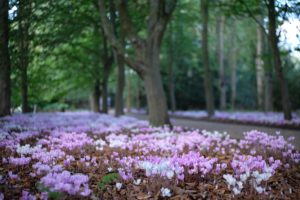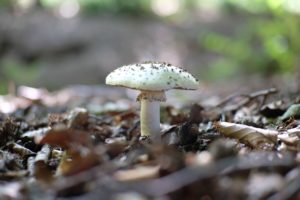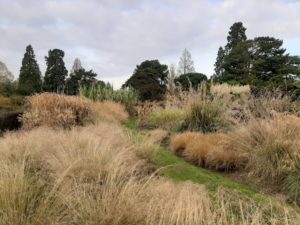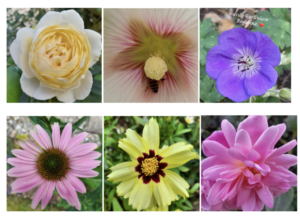Top Tips for Autumn Interest
Hello, my name is Katie and I am a professional gardener from Yorkshire. I’m currently
enrolled on the 3-year traineeship with the PGG (professional gardeners guild). This is a
wonderful opportunity as it gives me the chance to work across the country with different
teams, plants and landscapes. Today I’m going to be giving my top tips for bringing Autumn
interest into your gardens!

1. Delay the seasonal cut – you may be familiar with the gardening phrase ‘if it’s brown,
chop it down’; but, personally, I love to see the full cycle of plants – including their dying off
stage – right through the autumn months. As conditions on the planet becoming increasingly
difficult for wildlife, these autumn seed heads and natural structures provide a living refuge
for biodiversity. Poppy seed heads, hydrangeas and teasels are particular seasonal
favourites of mine.
Often, with many herbaceous plants, you can give them a cut back mid-season (aka the
Chelsea chop) which allows you to control the size of the plant throughout the summer
months, meaning a ‘desperate border tidy’ can hold off a little longer. It also encourages
some earlier blooming plants to give a second late flush, allowing you to get a longer
flowering season from your garden.
2. Acers are ace – Acers are probably the one tree that people can identify, and for good
reason too! The vivid colours of Acers throughout the autumn months, certainly justifies
their popularity. Dotted sporadically through a garden, they can help give the space a sense
of perspective and depth, drawing the eye to key areas. A recommendation of mine would
be the Acer palmatum ‘Sango-kaku’ – with stems like a crimson red whip, contrasting the
delicate dripping of the autumnal yellow/green leaves, this acer certainly compliments a
seasonal garden.
3. Structure of the shrub – for me, a good autumn garden focuses on the idea of structure.
An easy way of achieving this is through the use of evergreen shrubs. Whilst a bright,
colourful herbaceous boarder optimises the English summer garden, installing a mixed
evergreen shrub border is a fantastic way of gaining that instant impact through the colder
months. Mahonias, Viburnums and Photinia all offer their own unique charm within an
autumn garden and can provide a beautiful compliment to the brown dying back structures
of the summer.
4. Don’t forget to underplant – layering is an essential part of any garden and autumn is no
different. We can often be guilty of neglecting this throughout the colder months, yet
swathes of colour can provide such joy in the starker days. My recommendations would be:
• Cyclamen
• Autumn crocus
• Erigeron

5. Feature food – one of the key events at this time of year is Halloween, so you could
consider growing squashes or pumpkins in your garden for that ‘seasonal interest’. Not only
do the vibrant colours have an autumnal feel, the sense of achievement from growing your
own pumpkins (for carving or eating) is an added bonus! They are super easy to cultivate
too; and who knows, it may inspire you to keep on growing your own sustainable food!
6. Tones and textures – we tend to associate autumn with browns, yellows and orange but
there are plenty of trees and shrubs out there that give a vivid kick of colour through the
autumn months. Some favourites worth a mention:
• Euonymus alatus (for a dramatic red to liven up borders)
• Cherries (which give an almost pink/coral – glow in the low sunlight)
• Cotinus (for the muted red and purple hues of autumn)
7. Pyracantha – Hedgerows come alive in September with the berries of hawthorns,
rosehips and elderberries. But the autumn berries of pyracantha are so abundant and
charming to see, that it can really liven up a dull space. It’s thorns are tough and unforgiving,
so I would personally suggest keeping them out of the way & at the edges of the garden. I
was converted to appreciating Pyracantha through seeing it trained espalier, so would
recommend giving this a try!
8. Featuring flowers – it can be a tricky time of the year for more tender plants as,
depending on your location, the frost may come quite early. Even so, it’s always nice to have
a part of the garden set aside for seasonal cut flowers to liven up the home. Fortunately,
there are some measures you can take to protect against the (early) frost. Where possible,
avoid planting tender species in open and exposed areas of the garden, or in particularly low
spots where cold air settles. An autumn top dressing can protect the roots but if you’re
mulching to keep the plants warm, ensure it’s done on a day where the ground isn’t frozen;
otherwise you’ll be counter productive and insulate the cold instead. Some late flowering
plants include:
• Dahlias
• Nerine bowdenii
• Verbena
• Rudbeckia
9. Make time for the fungi – though they are rarely an intentional part of gardening, they
are an essential part of the seasonal cycle, hence funguses being worth a mention in this
article. They are a vital part of the life cycle and help break down organic matter, thus
releasing carbon, oxygen, nitrogen, and phosphorus into the soil and the atmosphere.
They’re also a fun part of autumn, and I enjoy going for walks, hunting for them and
identifying the different species.

10. Rustling grasses – after a busy flowering season through the summer, I always
appreciate the calming effect of ornamental grasses as we move into October & November.
They look great in a long border, especially dotted amongst the seed heads of Phlomis.
There is such a vast variety of grasses ranging from the dominant architectural structure of
pampas grass, to the slow growing nature of mondo grass. Some of my favourites are:
• Jarava
• Stipa
• Molinia
• Pennisetum
Looking ahead to the future seasons – autumn is a great time to have a good tidy in the
garden. With many herbaceous plants dying back and deciduous shrubs dropping their
leaves, it gives us chance to see the bones of the garden. Now is the time to be planning
ahead and get your spring bulbs planted. Remember to care for your lawn too. Often we can
be guilty of neglecting turf during the colder months, but as we draw to the last cut of the
season, it is a good time to consider aerating and over seeding the lawn to make it even
better next summer.

Hope you enjoyed the tips – happy gardening!
For more garden inspo, you can follow my Instagram: @katiemackgarden





